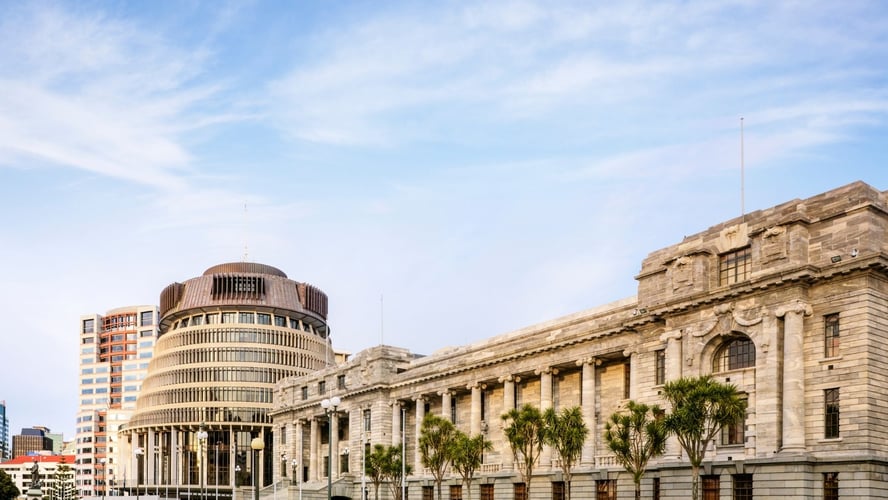.png?width=50&name=Olivia%20Blaylock%20(2).png)

This article was originally published on BusinessDesk on 30 Oct, 2024.
Kiwis are fed up with New Zealand’s infrastructure delivery.
In a global survey, New Zealand has ranked last – tied with Hungary – for its record of delivering national infrastructure projects.
In the Ipsos 2024 Global Infrastructure Index 67% of Kiwis said the country is not doing enough to meet its infrastructure needs.
But it will take a certain type of leader to guide New Zealanders to a future-proofed, bi-partisan infrastructure plan.
It will most likely need to be someone with similar leadership qualities to a certain yachtie who led a nation to wear red socks.
We need growth
Looking back, New Zealand has had more than a few of these types of leaders: Rob Muldoon and Think Big; Roger Douglas and Rogernomics. But these were all in pre-MMP days so not representative of today’s “everyone gets a say” political make-up which, excluding a pandemic, generally doesn’t allow for such polarising leadership.

New Zealanders want better infrastructure. (Image: Kāpiti News)
Prime Minister Christopher Luxon, however, is putting his best foot forward, taking the Government on a path towards “creating the foundations for growth”. Yes, growth is what we need if we are to develop a long-term infrastructure plan, allowing all New Zealanders access to timely hospital care, efficient public transport, safe roads and smart education.
But where does the money come from?
The most obvious current platform is the Super Fund, which operates independently from the Government of the day.
What if the Super Fund was used as a guarantor for infrastructure projects with those projects charged with creating a return to the fund? Productivity and efficiency on those projects would increase for sure.
Income streams from the bright-line or a foreign investment levy could also be directed here and may be more palatable if those taxes were going into a bi-partisan fund rather than straight to the Government coffers.
Deputy PM Winston Peters' $100 billion “Future Fund” announcement has given us no indication of where the money will come from. The fact that it came from NZ First and not the coalition Government is a red flag that New Zealand politics will again get in the way of our long-term infrastructure planning progress.
Sam Stubbs from KiwiSaver and Investment fund Simplicity has long advocated for a Kiwi Infrastructure Fund, majority owned by the Government with KiwiSaver managers, ACC, NZ Super Fund and iwi owning minority stakes. But the idea doesn’t seem to be getting picked up, possibly because Stubbs' plan involves too many players.
What projects could be achieved sooner rather than later if we had certainty of a 5-year plan initialising real change?
Ruing inaction
The consequences of not setting up a new way to fund vital infrastructure could lead many New Zealanders to face years on rundown hospital waiting lists while regionally based construction businesses twiddle their thumbs, ruing the day we didn’t make change when we had the chance.
I recently spent time in Queenstown with 18 of our larger Icehouse alumni business owners, the majority leading $10m-$50m businesses, at the same time as the Government announced the fast-track consents for 149 projects.
The mood of the room was frustration: frustration at the lack of bi-partisan planning, which means even with consents being fast-tracked, the lag will be too great for many of the projects because their funding opportunities may have shifted.

Christopher Luxon has pointed to the proposed new Cook Strait ferries as an example of inherited cost blowout. (Image: Mark Mitchell)
The PM also seems to sense the frustration, commenting that New Zealand taxpayers could not continue to inherit “cost blowouts”, pointing to the Interislander ferries and school building projects.
The recent protests in Dunedin seem to reflect a turning tide in the country, one that is demanding answers.
But without the economies of scale brought about by a number of Think Big-sized projects giving businesses the opportunity to make long-term planning decisions around labour and capital expenditure, it’s unlikely costs will decrease enough for our politicians to provide those answers. New Zealand needs to experience the same sort of team spirit and leadership that Peter Blake delivered in 1995 if we are to make the necessary change to ensure New Zealand continues to be a jewel in the South Pacific and not a sinking ship.


